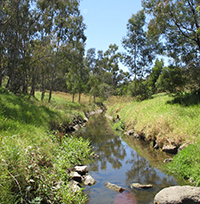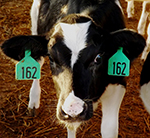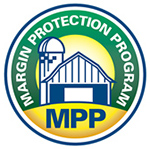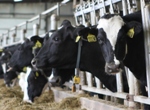During this year’s holiday season, it is appropriate for most of us in the dairy community to take a moment to give thanks for 2014’s bounty.
For dairy farmers, this year will be one for the record books. The cornucopia typically celebrated during Thanksgiving was harvested by dairy farmers this year in the form of record-high milk prices, lower feed costs, and a resulting economic blessing that greatly helps salve the losses generated by far different conditions in 2009 and 2012. This year, farmers in the U.S. fully reaped the benefits of the growing global market for dairy foods. Driven by a surge in world demand for dairy foods, America’s dairy farmers responded to the emerging middle class consumer base across Asia by boosting our exports to meet that demand. Milk prices were high elsewhere in the world, but were much higher, and for a longer period of time, here at home, as our farmers fully capitalized on great opportunities abroad.
For that, we can in part thank the Cooperatives Working Together program, which so far has helped to export the equivalent of more than 2.5 billion pounds of cheese, butter and whole milk powder – about half of the year-to-date increase in U.S. milk production. Tighter inventories in American warehouses helped buck up farm-level milk prices, even as world dairy commodity markets began to sag a few months ago.
Those strong prices for butter and cheese – each of which set a new record this year at the Chicago Mercantile Exchange – were all the more welcome when paired with the lower cost of feed for livestock producers. The five-year fever that boosted corn and soybean prices finally broke in 2014, and great weather across the Corn Belt this summer generated a bountiful harvest this autumn. Lower grain prices are a blessing for cattle, pork and poultry farmers who needed the cost of production pendulum to swing back in their favor.
No end-of-year assessment by dairy farmers would be complete in 2014 without acknowledging the five years of hard work in the national policy arena that have finally produced a new safety net in the form of the USDA Margin Protection Program. The MPP, which NMPF developed and nurtured through the legislative process, is destined to be a more flexible, fair and generous form of catastrophic insurance coverage than any program dairy producers have seen for generations. The start of the program this fall is the culmination of dedicated effort by farm groups that, in the true spirit of the Pilgrims, sought new opportunities and brought them to fruition through their dogged perseverance.
Any holiday celebration for these developments must be tempered somewhat by the challenges that remain, and will need to be confronted in the months and years ahead. Milk prices will be a different story in 2015. And, because Congress chose otherwise, there will be no market stabilization program to soften the price decline. Fortunately, farmers who enroll in the MPP will protect some of their downside risk. But those who don’t could be riding another milk-price roller coaster.
Here in Washington, the recent announcement of the White House executive action on immigration policy did not directly address the needs of farm employers, and at the same time, lack of action this year by Congress ensures that immigration policy will remain a contentious battleground into next year.
There are other ongoing challenges as well, ranging from food safety, to animal welfare, to environmental protection. None of these issues is going to be resolved to anyone’s satisfaction in the near future. All will need our continued due diligence, strategic engagement and collaboration to turn them, where possible, into opportunities for the dairy sector, rather than liabilities.
But back to a glass-more-than-half-full frame of mind. For my part, I am thankful for the warm reception and strong support I have received across the dairy industry as I’ve embarked on my new role as head of NMPF. This has been a great year of renewed relationships and new friendships, of learning and leading, listening and advocating. This is a wonderful industry, and I am thankful to be part of it.
 NMPF has held extensive consultations with key negotiators on the Trans-Pacific Partnership trade pact in advance of a meeting set for Washington during the second week in December. NMPF staff has been in constant communications with U.S. TPP negotiators, and traveled to China in November for discussions with U.S. negotiators and others involved in the Asia-Pacific Economic Cooperation forum.
NMPF has held extensive consultations with key negotiators on the Trans-Pacific Partnership trade pact in advance of a meeting set for Washington during the second week in December. NMPF staff has been in constant communications with U.S. TPP negotiators, and traveled to China in November for discussions with U.S. negotiators and others involved in the Asia-Pacific Economic Cooperation forum.
 During the month of November,
During the month of November,  NMPF has proposed a series of changes to the Environmental Protection Agency’s controversial Waters of the U.S. regulation, asking either that its recommendations be included in the current draft, or that EPA withdraw and rewrite the rule.
NMPF has proposed a series of changes to the Environmental Protection Agency’s controversial Waters of the U.S. regulation, asking either that its recommendations be included in the current draft, or that EPA withdraw and rewrite the rule. NMPF President and CEO Jim Mulhern joined the country’s oldest humane animal treatment organization, a top chef and others in a mid-November panel discussion about commitment to proper farm animal care.
NMPF President and CEO Jim Mulhern joined the country’s oldest humane animal treatment organization, a top chef and others in a mid-November panel discussion about commitment to proper farm animal care. NMPF is accepting applications for its National Dairy Leadership Scholarship Program for academic year 2015-2016. Qualified students must be enrolled in a Master’s or Ph.D. program and conducting research of interest to NMPF-member cooperatives and the dairy industry in general.
NMPF is accepting applications for its National Dairy Leadership Scholarship Program for academic year 2015-2016. Qualified students must be enrolled in a Master’s or Ph.D. program and conducting research of interest to NMPF-member cooperatives and the dairy industry in general.
 Enrolling This Year Will Boost Your Production History for 2015
Enrolling This Year Will Boost Your Production History for 2015



